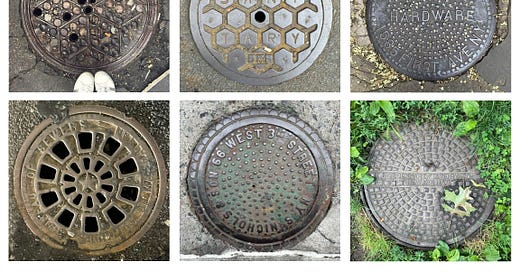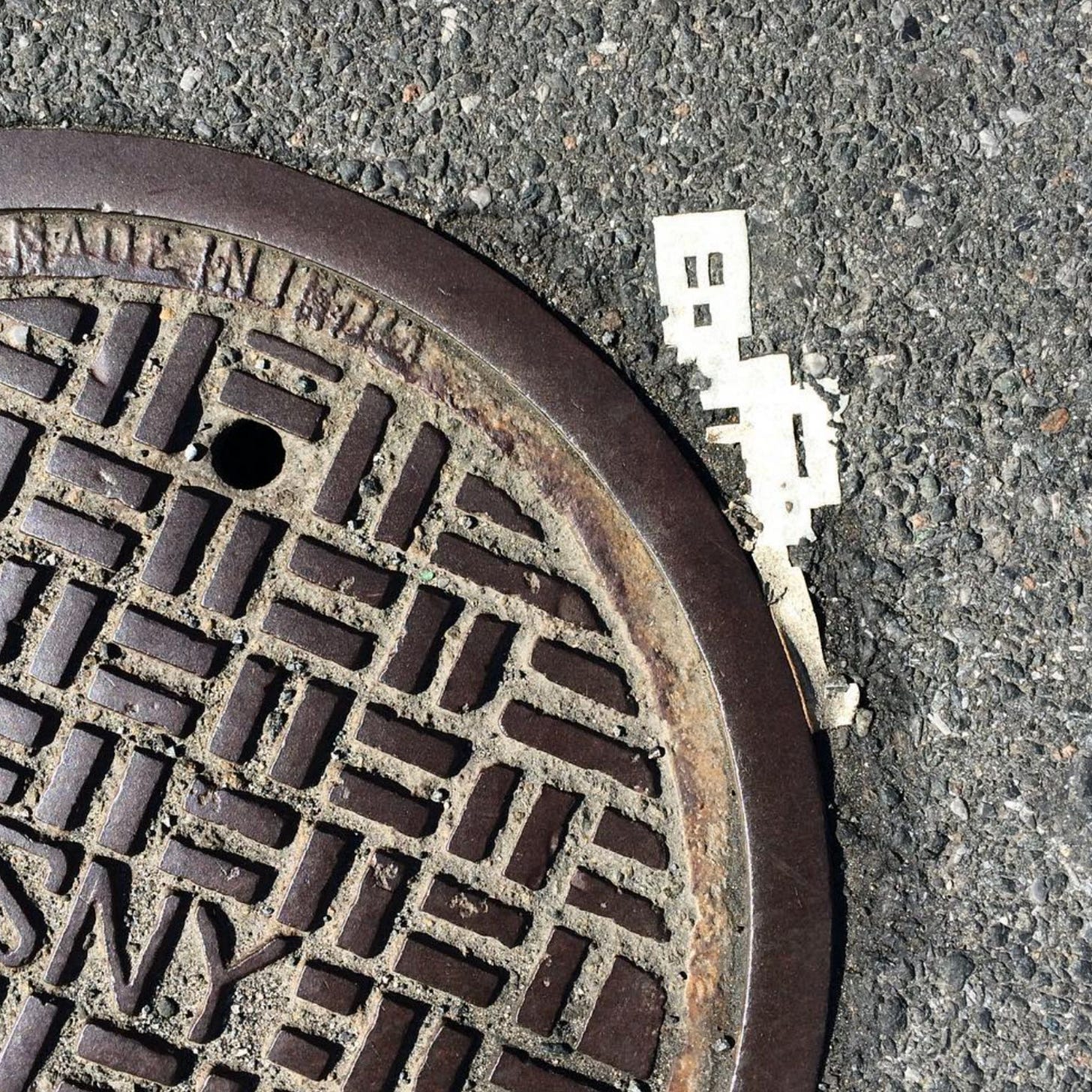Beneath Our Feet: New York's Hidden History
What began as a distraction from heartache led me to a treasure trove of historical information.
During a heartbreaking period, I found myself grasping for anchors and turned to a creative pursuit: photography. Through the camera lens, I observed the world around me; there wasn’t space to obsess over the pain.
I began noticing unassuming pieces of infrastructure that reflect the city's rich history—manhole covers. The guardians of the city's water pipes, sewers, phone lines, and more. These portals to the subterranean world have been celebrated in stories and shrouded in mystery even before the Teenage Mutant Ninja Turtles. In the 1930s, rumors of alligators lurking in the depths of the city’s sewers began to swirl. Of course, alligators aren’t native to New York. Still, they are sometimes kept (illegally) as pets and set free in city parks and waterways.
My fascination with manhole covers led me to a treasure trove of historical information. Did you know that some of the covers we see are actually coal covers? Above is one example. First installed in the nineteenth and mid-twentieth century when New Yorkers relied on coal for heating, they allowed direct access to basements so workers could lower coal into buildings near furnaces instead of carrying it through homes.
Each cover design is a unique testament to New York's history, not just for its practical use but also for its aesthetic design. The raised detailing serves a crucial purpose, preventing people (and horses) from slipping in wet weather. They’re also a form of branding. The city’s numerous foundries of the era selected a design to represent their business, adding a touch of art to the city's infrastructure. A detail worth appreciating.
J.B. and J.M. Cornell manufactured the above coal chute between 1896 and 1925, making this cover about 100 years old. The circular pattern is reminiscent of the hollow sidewalks of Soho. The Cornell company is still around today, albeit no longer in NYC.
This sewer cap inscription, Manhattan Bor, is often read by those who notice it as Manhattan Born. It is short for Manhattan Borough, indicating that the cover was installed under the directive of the Manhattan Borough President who was responsible for the sewer system until the 1970s when the Department of Environmental Protection took control.
Even these seemingly utilitarian objects have their controversies. Diana Stewart, “The Manhole Cover Lady,” who wrote a book on the art of manhole covers, has adamantly appealed to the Landmarks Preservation Committee to preserve historic discs. While the committee has acknowledged their beauty and place in history, they’ve also stated they’re impermanent by design. It is not feasible to landmark them because landmark status would require workers to obtain special permission to remove the covers—impractical and dangerous in an emergency. Unfortunately, an 1866 cover for the Croton Aqueduct was paved over in 2017, causing outrage from manhole cover enthusiasts, one of whom wrote a eulogy for it. One of these Croton Aqueduct covers, though to be the oldest in NYC, still exists in Central Park near the tennis center. You can see it on my Instagram feed.
My days of emotional turmoil are behind me. Yet, I still find joy in stumbling across a unique manhole and coal chute covers. I’d love to know if you learned something new and if you enjoy this type of content from me. Let me know in the comments.
Till next week,
Photo of the Week
This manhole has been adorned with a tarmac street creature called Stikman. The artist behind these figures says they install them to “encourage the viewer to see where others may not look.”
Learn more about the artist in this Streets Dept interview.
Words of the Week
Among the busy city streets
The only things not moving
Were the manhole covers.
—The International Imaginarium Group Poem for May 3rd, 2023
My community-building contest is in full swing! It runs from now through May 17th, 2024. Please share the Fly Bravely newsletter or this link with anyone who would enjoy the content. You'll earn one entry in the contest for each new subscriber you refer. The subscriber who drives the most new sign-ups gets to choose from one of nine unique and fantastic prizes, all made or sourced by me :)
If you have a Substack newsletter, add Fly Bravely as a recommended publication, and you'll gain five entries!
Here’s one of the prizes: a vintage hobble-skirt Coca-Cola bottle I found at a beach in Brooklyn (that you’ll learn about in an upcoming newsletter). It makes a great flower bud vase.
The winner will be announced on May 20th. The prize ships free to your doorstep (within the United States). Tell us who you've shared Fly Bravely with by replying to this email so we can track your entry.















I thought I was the only weirdo that looked at manhole covers. I look for the date and the casting of foundry info on it. New ones are not very interesting but old city ones are the best. My father grew up in Sunnyside and Astoria Queens showed me how to look for coal chutes. He lived in apartment buildings that actually used coal furnaces and boilers. If I can remember correctly they were smaller then you normal manhole cover??